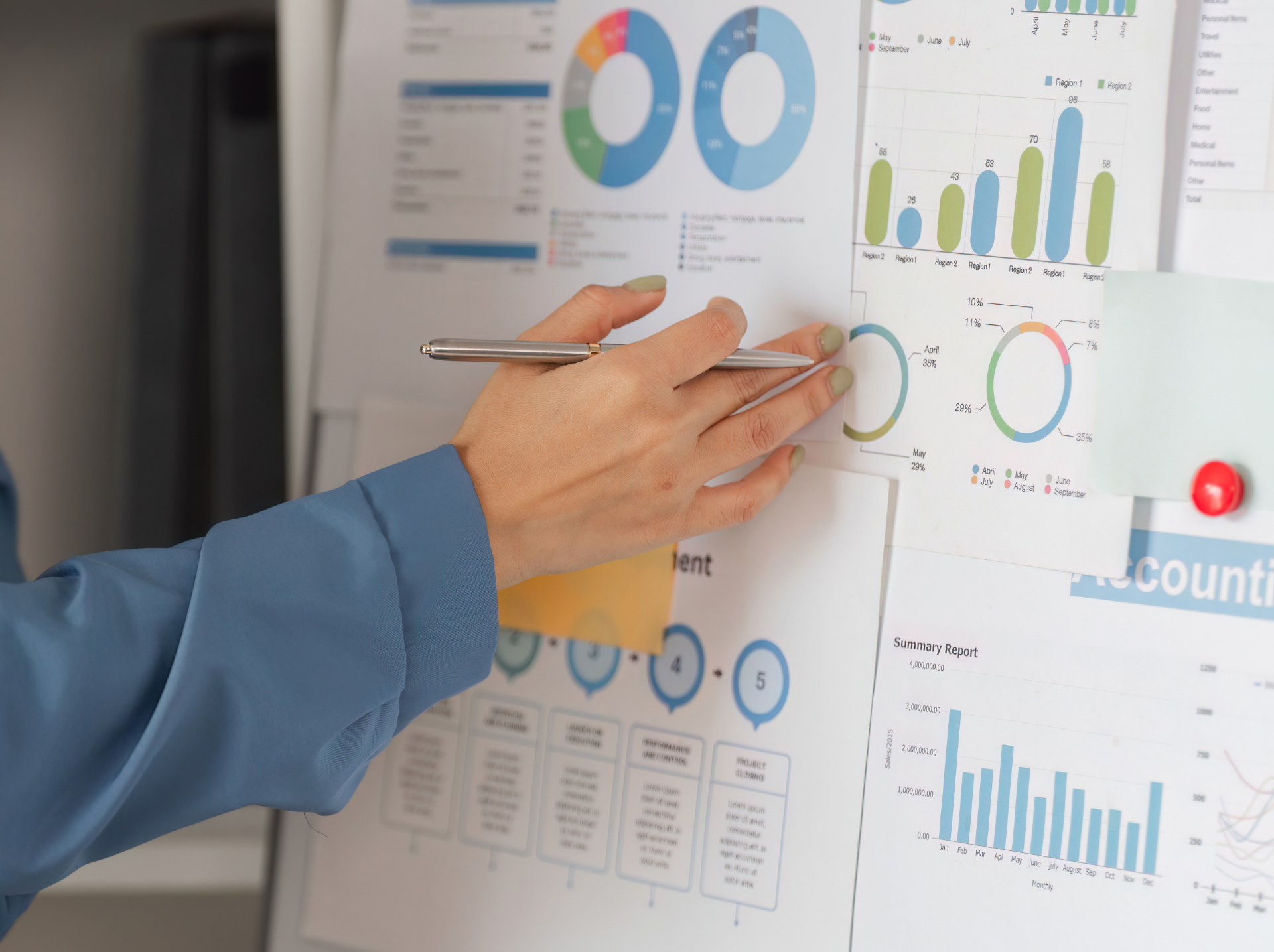Sustainability Metrics: Definition & Examples 2025 Trends & Best Practices

Sustainability is a must for businesses today with the growing climate crisis and more people caring about the environment. Consumers now expect companies to be responsible, not just in their products, but in how they impact the world around them. Businesses that don’t take action risk being left behind.
Companies that ignore the need to be eco-friendly might lose customers and hurt their reputations. On the other hand, businesses that make an effort to be more sustainable can build stronger loyalty from customers. They can also improve their image and grow their business.
In this blog, we’ll look at key sustainability metrics and how they can help your business grow while making a positive impact on the planet.
What are the Sustainability Metrics?
Sustainability Metrics measure how your business affects the environment and society. They show how much energy and resources you're using and how much waste you're generating. They also help you see how well your sustainability efforts are working.
For your business, these metrics are key to making smart decisions about where to use resources and invest in green initiatives. They show that your business cares about the environment, which is important to customers, partners, and regulators.
4 Key sustainability metrics to track
Use simple sustainability metrics that match your business goals to track your environmental impact. Here are some key metrics to turn your sustainability efforts into meaningful results:
1. Energy efficiency ratio
This metric shows how your business uses energy. To calculate it, divide total energy consumption by production output or revenue. A lower ratio indicates better energy efficiency.
Track peak usage periods to spot times when energy use is higher than needed. Monthly comparison reports can also help you identify trends and areas to improve. Finally, compare your results with industry standards to set clear improvement targets.
2. Water usage intensity
The metric of water usage intensity shows how much water your business uses compared to its work. To calculate it, divide total water use by production units or the size of your facility.
Watch for seasonal changes in water use, as this can help spot patterns. Installing smart meters will also help you track water use in real time.
3. Carbon footprint
It measures how much greenhouse gas your business emits – like energy use, transportation, and other activities. It’s important to track both direct emissions (from your business) and indirect emissions (from things like your supply chain) separately. You can calculate emissions by dividing them by your production.
4. Resource recovery rate
It tracks how much of your waste is recycled. To calculate it, divide the amount of recovered materials by the total waste generated. Identifying high-value recoverable materials helps improve the efficiency of your recycling efforts.
It’s also important to monitor market prices for recyclables, as they can influence your recovery strategy. Keep an eye on processing costs for each material type and measure contamination rates in recycling streams to improve overall recovery.
5. Supply chain sustainability score
The supply chain sustainability score looks at how eco-friendly your suppliers are. Create a scoring system based on their practices to assess their performance. Track their progress over time to see improvements. Consider transportation distances and methods, as they are important in sustainability.
How sustainability metrics drive business growth
Sustainability metrics help you save money by using resources more wisely. By keeping track of how much energy and water you use, you can find areas where you're wasting them and make simple changes to reduce it. This cuts your costs and helps the environment.
Over time, these small changes can make your business more eco-friendly and save you money. As consumers increasingly care about the environment, being eco-friendly can attract a loyal customer base. Showcasing your sustainability efforts builds trust and reputation and can even spark innovation, setting your business apart from competitors.
Such metrics also help you keep up with laws and regulations. By tracking your impact, you can make sure you're not breaking any rules, which helps you avoid fines or problems.
These metrics can also help attract investment. If your business is eco-friendly, you might get special funding, which could include lower loan rates or green bonds. With this money, your business can grow and expand.
Top 4 strategies for implementing sustainability metrics
You need a clear plan and your team's support to use sustainability metrics well. Let’s look at strategies that give real results.
1. Build a dedicated green team
First, set up a committee with people from different parts of the business. Teach them how to collect and understand the data. Make sure they report regularly and create plans for how to improve further. Help your team learn more by providing special training.
Finally, create a system to reward the team for meeting their goals and progressing.
2. Invest in monitoring systems
Start by setting up automated systems to track important sustainability metrics, such as energy use, water consumption, waste production, and emissions. Set up backup systems to protect important measurements. Finally, create simple, custom templates for reporting so you can easily share the results with everyone.
3. Engage stakeholders
First, make sure to explain your sustainability goals and metrics to all employees. Give rewards for meeting these goals to keep everyone excited. Share regular updates on your progress with stakeholders so they stay informed. Offer training to teach your team about sustainability and how they can help.
Set up a system where employees can suggest ways to improve. Hold workshops often to keep sustainability on everyone’s mind and get fresh ideas. Finally, get your suppliers involved by creating programs that encourage them to adopt sustainable practices.
4. Review and adjust regularly
Set simple goals for each sustainability metric. Check your progress monthly and adjust your approach if something isn’t working, reviewing regularly to ensure improvements. After each review, adjust your goals to reflect what you’ve achieved. Write down lessons learnt for future use. Finally, create a plan to keep improving and set new goals.
Examples of Sustainability Metrics
Real examples show how sustainability metrics improve business results. Let’s see how global companies got better by tracking their impact.
1. Microsoft's carbon-negative journey
Microsoft faced pressure to reduce its effect on the environment due to the large carbon footprint from its global activities and online services.
In 2020, they started tracking carbon across their operations[1]. They set up a $1 billion climate fund and internal carbon fees. Their metrics tracked emissions and supplier impacts.
By tracking sustainability, Microsoft reduced water use in data centres, switched to renewable energy, and developed carbon capture technology. They also promised to be carbon-negative by 2030, removing more carbon than they produce. Their clear updates built trust with partners and improved their market position.
2. Unilever's waste reduction success
Unilever faced a challenge with plastic waste in its supply chain and was receiving customer complaints. To combat it, they started the 'Sustainable Living Plan'[2] with clear goals to cut plastic waste. They tracked packaging, recycled materials, and waste in their factories.
As a result, they reached zero waste to landfill in their factories, cutting costs. Unilever promised to cut plastic packaging by 2025, which boosted consumer trust and brand loyalty. These actions helped them lead the industry, making sustainability central to their brand.
Adopt sustainable strategies with GrowthJockey
Sustainability metrics help businesses save money and make wise choices. Tracking their impact builds customer trust. Businesses that improve their impact stay ahead in a market where being eco-friendly matters.
At GrowthJockey as Startup Incubators(https://www.growthjockey.com/), we help businesses adopt sustainability strategies that lead to long-term success. We make sure these strategies meet both legal rules and customer expectations. Our approach helps companies measure their impact, set achievable goals, and improve their processes for ongoing progress.
Sustainability Metrics FAQs
1. What are the KPIs for sustainability?
KPIs for sustainability include how well a business uses energy, how much water it uses, how much waste it reduces, its carbon emissions, and how much it recycles or reuses.
2. What are the 5 Cs of sustainability?
These are the 5 Cs of sustainability:
-
Conservation
-
Carbon reduction
-
Compliance
-
Cost savings
-
Community engagement
3. What is the importance of sustainability metrics?
Sustainability metrics help track how a business affects the environment, find ways to save money, and improve efficiency. This can also lead to business growth by making operations more effective.
4. How does sustainability drive growth?
It reduces operational costs, enhances brand value, attracts conscious customers, and ensures regulatory compliance.
5. What are the three metrics that measure sustainability success?
The three main metrics are reducing environmental impact, using resources more efficiently, and adopting eco-friendly business practices. These help businesses track their progress towards being more sustainable.








